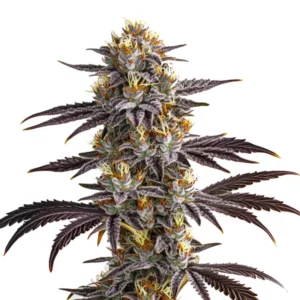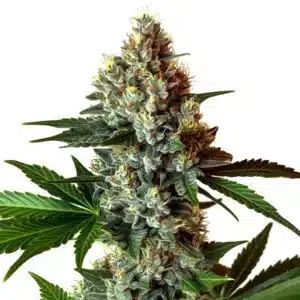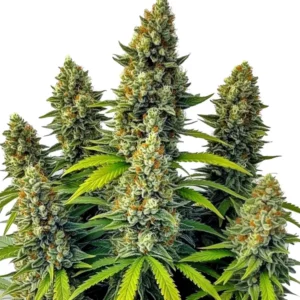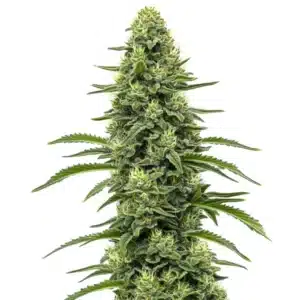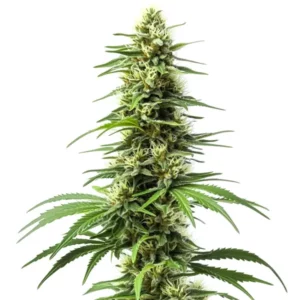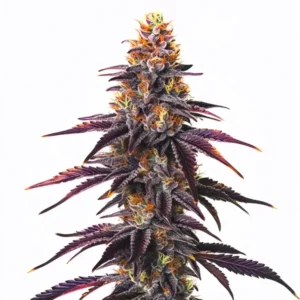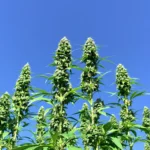
Photoreceptors in Cannabis Seedling Development
Photoreceptors in cannabis seedling development hold vital significance in the growth journey of your plants. These tiny sensors in plants detect light and help convert it into signals that guide growth. Cannabis seedlings rely heavily on these photoreceptors to determine how they grow and develop. For both first-time buyers and seasoned growers, knowing this can make a big difference in your plant’s health.
Light is more than just a source of energy. It acts as a signal that can change how a plant grows. The effects of light spectrum on cannabis seedling photoreceptors are profound. Different wavelengths of light can trigger various responses. For instance, blue light encourages healthy leaf growth, while red light is crucial for stem elongation. By managing the light spectrum, you can influence how your cannabis seedlings develop and thrive.
Recommended Strains
Gelato Auto
|
|
THC | 19% - 21% (Medium) |
|
|
Type | Autoflowering |
|
|
Yield | Medium |
|
|
Phenotype | 40% Indica / 60% Sativa |
Blue Dream
|
|
THC | 17% - 24% (Medium) |
|
|
Type | Feminized |
|
|
Yield | High |
|
|
Phenotype | 50% Indica / 50% Sativa |
As your seedlings grow, photoreceptor signaling pathways in cannabis seedlings come into play. These pathways are like roads that guide signals from the photoreceptors to different parts of the plant. This communication is essential for processes like photosynthesis and flowering. Choosing the right light spectrum and knowing these pathways can significantly enhance cannabis seedling development and photoreceptor interaction.
Photoreceptor Role in Cannabis Seedling Growth
While photoreceptors are tiny, their impact on cannabis seedling development is immense. They help plants know when to stretch towards light and when to conserve energy. Cannabis plants have several types of photoreceptors, each responding to different light conditions. This response is crucial for optimizing growth and ensuring robust seedlings.
Among the types of photoreceptors, phytochromes and cryptochromes play a significant role. Phytochromes react mainly to red and far-red light, while cryptochromes are sensitive to blue light. Together, they regulate processes such as seed germination and stem elongation. By knowing the photoreceptor role in cannabis seedling growth, you can better control your growing environment.
The function of photoreceptors extends beyond basic growth; they are also involved in stress responses. For example, when cannabis seedlings are exposed to intense light, photoreceptors can trigger protective mechanisms to prevent damage. This adaptability is crucial for maintaining plant health under varying environmental conditions. Knowing these responses can aid in developing strategies to mitigate stress and promote resilience in seedlings.
Furthermore, photoreceptors in cannabis seedling development are integral in coordinating the plant’s internal clock, known as the circadian rhythm. This biological timing system ensures that physiological processes occur at the optimal time of day, enhancing growth efficiency. By aligning light exposure with the plant’s natural rhythms, growers can optimize growth and maximize yield potential.
Effects of Light Spectrum on Cannabis Seedling Photoreceptors
Light spectrum has a direct influence on how photoreceptors in cannabis seedlings function. Red and blue lights are especially important. Red light affects flowering and root development, while blue light is key for leaf expansion and stem strength. By adjusting light exposure, you can craft the perfect environment for your seedlings.
Using a balanced light spectrum is crucial. Too much red light might cause your seedlings to become leggy, while an excess of blue light can stunt growth. A practical example is using full-spectrum LED lights, which simulate natural sunlight, providing a balanced light ratio for optimal growth.
Beyond red and blue, other parts of the light spectrum, such as far-red and green light, also play a role in seedling development. Far-red light can influence shade avoidance responses, prompting seedlings to stretch towards light, while green light can penetrate deeper into the canopy, impacting lower leaves. A comprehensive approach to light management considers these additional wavelengths for holistic plant growth.
Moreover, the effects of light spectrum on cannabis seedling photoreceptors can be tailored to specific growth stages. During early development, a higher ratio of blue light can promote compact and sturdy seedlings, while transitioning to a red-dominant spectrum later can enhance flowering and fruiting. This strategic adjustment of light conditions according to growth phases can lead to more efficient cultivation.
Influence of Photoreceptors on Cannabis Plant Morphology
The shape and form of cannabis plants, known as morphology, are heavily influenced by photoreceptors. Photoreceptor interaction with light determines plant height, leaf size, and even flowering time. This interaction is why some plants grow tall and others stay short and bushy.
+For instance, the Blue Dream strain is known for its balanced growth, thanks to a well-managed light environment. By knowing photoreceptor influence, growers can tailor their cultivation techniques to enhance desired plant traits.
Photoreceptors also play a role in determining branching patterns. By manipulating light exposure, growers can influence lateral bud development, leading to either more bushy plants or those with fewer branches, depending on cultivation goals. This level of control over plant architecture is invaluable for optimizing space and light utilization in growing environments.
Besides, the influence of photoreceptors on cannabis plant morphology extends to leaf angle and orientation. Plants adjust their leaves to maximize light capture, a process regulated by photoreceptors. Knowing and harnessing this natural behavior can improve light penetration and photosynthetic efficiency, resulting in healthier, more productive plants.
Promos & Deals
Photoreceptor Signaling Pathways in Cannabis Seedlings
These pathways are intricate networks that ensure signals from photoreceptors reach their destinations. They are crucial for processes like flowering and photosynthesis. A healthy signaling pathway ensures that your cannabis plant responds well to its environment.
The pathways are influenced by external factors like light quality and quantity. For example, too much light can overwhelm the system, while too little can stunt growth. A balanced approach, as seen with strains like Gelato Auto, encourages optimal growth conditions.
Photoreceptor signaling pathways in cannabis seedlings are not only essential for growth but also for stress adaptation. When environmental conditions fluctuate, these pathways help the plant adjust by modulating growth rates and resource allocation. This adaptability is key to resilience, allowing seedlings to thrive even in less-than-ideal conditions.
Additionally, these signaling pathways interact with other hormonal networks within the plant, such as those involving auxins and gibberellins. This interaction enables a coordinated response to light cues, optimizing growth patterns and development stages. By knowing and managing these pathways, growers can fine-tune plant responses to achieve desired outcomes.
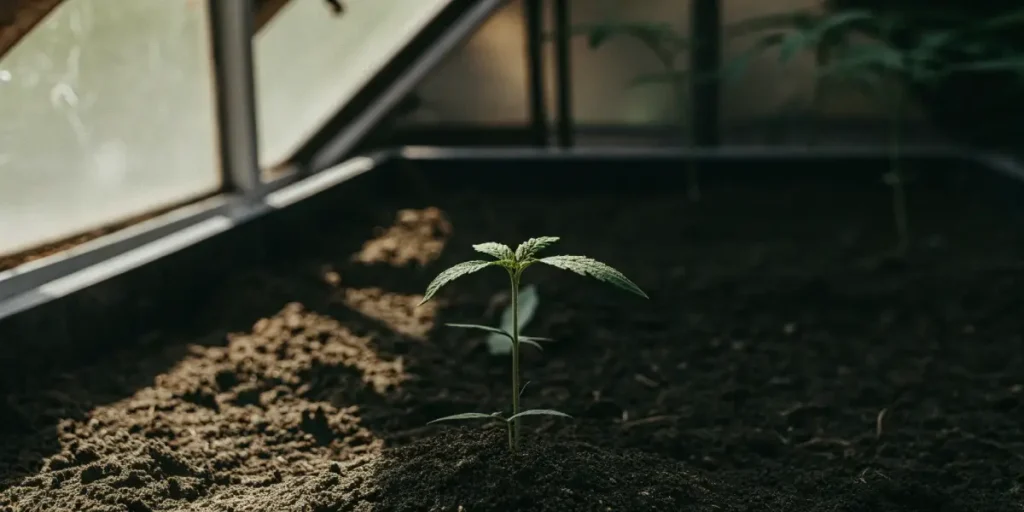
FAQs
What are photoreceptors in cannabis seedlings?
Photoreceptors are tiny proteins found in cannabis seedlings that detect light. They help the plant understand its environment, guiding processes like growth and development. By responding to different light wavelengths, photoreceptors help seedlings adapt to their surroundings.
These proteins are crucial for healthy seedling development. They influence everything from stem elongation to leaf expansion. For example, blue light-sensitive photoreceptors promote strong stem and leaf growth, making them essential for robust seedlings.
Knowing photoreceptors in cannabis seedling development is essential for growers aiming to optimize plant health. These proteins not only facilitate growth but also play a role in stress management and adaptation to environmental changes. By leveraging this knowledge, growers can enhance seedling resilience and overall vitality.
Moreover, photoreceptors are involved in initiating flowering in response to changing light conditions. This ensures that cannabis plants flower at the optimal time, maximizing reproductive success. Effective management of light exposure can thus enhance flowering and potentially increase yields.
How does light spectrum affect cannabis seedling growth?
The light spectrum plays a vital role in seedling development. Different colors of light trigger various responses in the seedlings. Blue light encourages leaf growth and overall plant strength, while red light is important for flowering and root development.
By adjusting the light spectrum, growers can enhance specific growth traits. Using full-spectrum lighting can simulate natural sunlight, providing a balanced environment that supports all stages of growth.
A well-managed light spectrum can also influence the timing and uniformity of seedling growth. By providing the right light conditions, growers can ensure that all seedlings develop at a similar rate, facilitating uniform canopy development and easing subsequent cultivation practices.
Additionally, the effects of light spectrum on cannabis seedling photoreceptors can be harnessed to manipulate the photoperiod, thereby controlling the transition from vegetative to flowering stages. This manipulation is a powerful tool for aligning plant development with cultivation goals and market demands.
Why is photoreceptor interaction important for cannabis development?
Photoreceptor interaction helps regulate key growth processes in cannabis plants. This interaction ensures that the plants grow optimally, responding to light cues that guide development. Effective interaction can lead to healthier, more productive plants.
For growers, knowing this interaction can help optimize growing conditions. By managing light exposure, you can enhance growth traits such as plant height and leaf size, resulting in a successful harvest.
The importance of photoreceptor interaction extends to its impact on energy efficiency within the plant. By optimizing light capture and utilization, photoreceptors contribute to improved photosynthetic performance, ultimately supporting faster growth rates and higher biomass production.
Furthermore, cannabis seedling development and photoreceptor interaction are pivotal for synchronizing growth with environmental changes. As seasons shift, photoreceptors help the plant adjust its growth patterns, ensuring survival and reproductive success. This adaptability underscores the importance of photoreceptor management in cultivation practices.
Can adjusting light improve cannabis plant morphology?
Yes, adjusting the light can significantly influence plant morphology. By tweaking light exposure, growers can control plant shape and size. For instance, increasing blue light can lead to bushier plants, while more red light can encourage taller growth.
Using this knowledge, growers can shape their plants to suit their needs, whether for space management or yield optimization. This is a practical way to enhance the growing process, leading to better quality and higher yields.
Light adjustments not only impact size and shape but also affect the density of cannabis plants. By fine-tuning light conditions, growers can promote dense foliage and compact growth, which is particularly beneficial in limited space environments or for increasing canopy coverage.
Moreover, the influence of photoreceptors on cannabis plant morphology includes adjustments in flowering patterns. By manipulating light exposure, growers can control flowering onset and duration, optimizing harvest timing and aligning production cycles with market demands.
How do photoreceptor signaling pathways affect cannabis seedlings?
These pathways are essential for transmitting light signals within the plant. They ensure that the plant responds to its environment, adjusting growth as needed. Healthy signaling pathways are crucial for processes like photosynthesis and flowering.
By managing these pathways, growers can create optimal growing conditions. This involves balancing light exposure and ensuring seedlings receive the right signals for healthy development, ultimately leading to robust and productive cannabis plants.
Photoreceptor signaling pathways in cannabis seedlings also play a key role in nutrient uptake and assimilation. By influencing root development and function, these pathways help optimize the plant’s ability to absorb essential nutrients, supporting vigorous growth and development.
Besides, these pathways are involved in mediating plant responses to biotic and abiotic stresses. By regulating defense mechanisms, photoreceptor signaling ensures that cannabis seedlings can resist pest attacks and environmental challenges, contributing to overall plant health and resilience.


